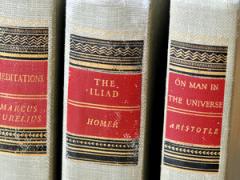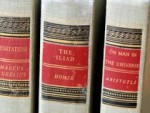by Christopher Westley – Mises Daily
Frank Bruni saw a woman swoon and sway back in the 1980s, and the recent memory of it caused him to call for increased federal support for liberal arts education.
The woman, Anne Hall, taught Shakespeare at UNC-Chapel Hill back in the days when North Carolina students were more focused on beating Duke in basketball than on Hall’s captivating performance of King Lear. Nonetheless, she made quite an impact on Bruni. “It was by far my favorite class at the University of North Carolina,” he wrote, “though I couldn’t and can’t think of any bluntly practical application for it, not unless you’re bound for a career on the stage or in academia.”
The Purpose of a Liberal Education
Today, some thirty years later and as a New York Times columnist, Bruni recalls this memory to bemoan the loss of liberal education at the large state universities in favor of piddling concerns such as skill acquisition and job placement. Will future generations learn like he did when they are instead focused on learning things that might actually land them a job?
Bruni is right to revere the liberal arts, but wrong to assume that its benefits are purely emotional. The goal of liberal education — at least before state funding diluted it — has always been about teaching students to think clearly about the world around them, develop a sense of right reason when confronting the great questions life, and grasp natural laws so as to better follow them and live happier lives. There is no question that the widespread effect of liberal ideas throughout Europe in the Middle Ages gave common man the framework within which to question the outlandish claims of kings over the people, such as those of divine rights and tribute.
From parish to pub and from family and factory, they were a major contributor to a decentralized Europe, leading to unprecedented levels of human flourishing and social freedom. Indeed, the liberal ideas had to be denigrated and then overcome in order for the modern nation-state to emerge in the nineteenth century, and we know the suffering and death this brought about in the century that followed.
The Shakespeare whom Bruni so admires was himself a product of liberal ideas still reverberating in England despite the efforts of Henry VIII, Cromwell, and others to squelch them. Furthermore, a modern-day Shakespeare would rightly ask the question Bruni avoids, which is whether one can receive the benefits of Lear and the liberal arts without also assuming $40K in debt in order to continue to feed the education-industrial complex (for which Bruni is actually lobbying).
To Bruni, such spending can never be enough, because liberal education is priceless. Whether it is or not, the irony is that the internet can now spread the benefits of liberal education at practically a zero-price, and one no longer must sit in a dank classroom of an elite university to receive its benefits. I speak with experience as a home-schooling father whose children have learned logic, Latin, the Classics, and the sciences, and whose freshman son is now nodding off in the logic class at his university that I (a public-school product) once struggled through as an undergraduate.
Do We Need Government To Fund the Liberal Arts?
Bruni should take heart: Many firms desiring a talented and smart labor force recruit liberal arts graduates. But do tuition revenue-focused public universities now oversupply them, and does this contribute to the problems associated today with the Millennials who are often over-trained, unemployable, and living with their parents? And do those graduates really learn to be critical of, well, anything, as opposed to having developed a sense of (in Bruni’s words) a “rawness and majesty of emotion”?
If so, the liberal education in its modern form has become part of the problem and should no longer be left to postmodern thinkers tied to the government dole. In the 1980s, Peter Drucker predicted that firms would start hiring workers out of high school because (1) they required a lower reservation wage, and (2) they could be trained to suit the needs of the firm in ways that were no longer happening at the universities. Many firms are doing just this in 2015. Thanks in part to the state of federally-funded liberal education, such practices will become more common.
None of this is meant to deny the tremendous need for classical liberal education, as our body-politic is directly affected by the loss of critical thinking skills by the median voter underexposed to it. One might argue this was the actual intent of Progressive Era education reformers who wanted to implement a national education system — modeled after the one in Bismarck’s Germany — in which the masses would be forced into public schools to be prepared for lives in the factory or army. People like Obama or Boehner want the man-on-the-street to be compliant and unquestioning of the world around him, thinking more about Fifty Shades of Grey than perpetual war, the national debt, and the NSA. So from that perspective, it’s exciting to think about how technology is wresting liberal education from those avenues favored by the State, largely by rebels who value it more and who opt out of the system.
Liberal education and the liberal society it fosters, noted Mises in Human Action, brought about “an age of immortal musicians, writers, poets, painters, and sculptors; it revolutionized philosophy, economics, mathematics, physics, chemistry, and biology. And, for the first time in history, it made the great works and the great thoughts accessible to the common man.”
It still does. Although much of this is happening sub rosa, the liberal arts are actually flourishing relative to where they were twenty years ago, thanks to the internet and without regard to higher-education funding levels. I wouldn’t hold my breath waiting for the New York Timesto acknowledge it.
Please see Mises Daily for the original article and others like it.


